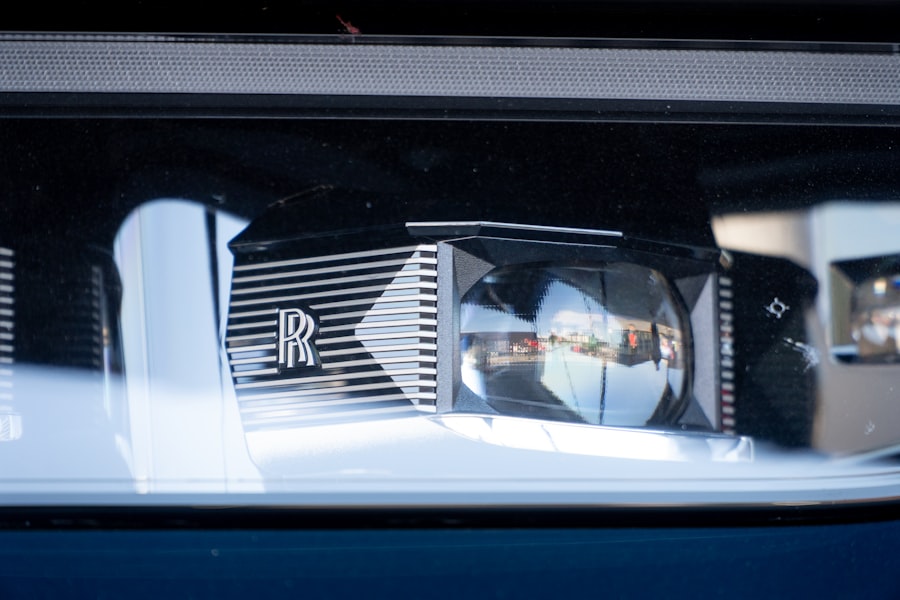The history of Rolls Royce in aviation is a tale woven with innovation, ambition, and a relentless pursuit of excellence. Founded in 1904 by Charles Rolls and Henry Royce, the company initially made its mark in the automotive industry, producing luxury cars that epitomized quality and craftsmanship. However, it was during World War I that Rolls Royce ventured into aviation, driven by the urgent need for reliable aircraft engines.
The introduction of the Eagle engine in 1915 marked a significant turning point, as it became the first British engine to power a military aircraft, the Vickers Vimy. This engine not only showcased the engineering prowess of Rolls Royce but also laid the groundwork for its future dominance in the aviation sector. As the years progressed, Rolls Royce continued to innovate and expand its aviation portfolio.
The interwar period saw the development of the Kestrel engine, which powered several notable aircraft, including the Hawker Fury and the Gloster Gladiator. The company’s reputation for producing high-performance engines was solidified during World War II with the introduction of the Merlin engine. This iconic powerplant was instrumental in the success of the Supermarine Spitfire and the Avro Lancaster, becoming synonymous with British aviation during the conflict.
The post-war era brought further advancements, as Rolls Royce transitioned into commercial aviation, developing engines like the Dart and the Trent series, which would go on to power a multitude of aircraft across various sectors.
Key Takeaways
- Rolls Royce has a rich history and legacy in aviation, dating back to its early engine developments.
- The company has continuously evolved its aircraft engines, enhancing performance and efficiency over time.
- Rolls Royce engines are renowned for their prestige, exclusivity, and association with luxury aircraft.
- Their engines are celebrated for exceptional reliability and high performance in various aviation applications.
- Innovation and advanced technology remain central to Rolls Royce’s influence and future growth in the aviation industry.
The Evolution of Rolls Royce Engines in Aircraft
The evolution of Rolls Royce engines in aircraft is characterized by a series of groundbreaking innovations that have consistently pushed the boundaries of performance and efficiency. In the early days, engines were primarily piston-driven, but as technology advanced, Rolls Royce embraced turbojet and turbofan designs that revolutionized air travel. The introduction of the Avon engine in the 1950s marked a significant leap forward, as it was one of the first turbojet engines to be used in commercial aviation.
Its ability to deliver high thrust while maintaining fuel efficiency set new standards for performance in both military and civilian aircraft. The development of the RB211 engine in the 1970s represented another milestone in Rolls Royce’s engineering journey. Designed for the Lockheed L-1011 TriStar, the RB211 was notable for its three-shaft design, which allowed for greater efficiency and reduced noise levels.
This innovative approach not only enhanced performance but also positioned Rolls Royce as a leader in environmental considerations within aviation. The RB211’s success paved the way for subsequent generations of engines, including the Trent series, which have become synonymous with modern commercial aviation. Each iteration has built upon its predecessors, incorporating advanced materials and technologies to improve reliability and reduce operational costs.
The Prestige and Exclusivity of Rolls Royce Aviation Engines

Rolls Royce aviation engines are often regarded as symbols of prestige and exclusivity within the aerospace industry. This reputation is not merely a result of their engineering excellence but also stems from the brand’s long-standing association with luxury and high performance. Aircraft powered by Rolls Royce engines are frequently seen as elite choices among airlines and private operators alike.
The company’s commitment to quality ensures that each engine is meticulously crafted, often tailored to meet specific customer requirements, which further enhances its allure. The exclusivity of Rolls Royce engines is also reflected in their limited production runs and bespoke nature. For instance, when airlines opt for Rolls Royce engines for their fleets, they are not just purchasing a powerplant; they are investing in a legacy of innovation and reliability that few can match.
This exclusivity extends to private jet owners who seek out Rolls Royce engines for their aircraft, knowing that they are choosing a product that embodies sophistication and performance. The combination of cutting-edge technology and artisanal craftsmanship creates an aura around Rolls Royce engines that few competitors can replicate.
The Performance and Reliability of Rolls Royce Engines in Aircraft
| Metric | Value | Unit | Notes |
|---|---|---|---|
| Engine Thrust Range | 20,000 – 115,000 | lbf | Varies by engine model (e.g., Trent series) |
| Time Between Overhaul (TBO) | 20,000 – 30,000 | Flight Hours | Depends on engine type and maintenance |
| In-Flight Shutdown Rate | 0.02 | Per 1,000 Engine Flight Hours | Indicative of high reliability |
| Fuel Efficiency Improvement | 15 – 20 | Percent | Compared to previous generation engines |
| Operational Availability | 99.5 | Percent | Average fleet availability rate |
| Engine Weight | 6,000 – 8,000 | kg | Varies by engine model |
| Average Engine Life | 25,000 | Flight Hours | Before major overhaul or replacement |
Performance and reliability are two cornerstones upon which Rolls Royce has built its reputation in aviation. The company’s engines are renowned for their ability to deliver exceptional thrust while maintaining optimal fuel efficiency. This performance is particularly evident in long-haul flights where operational costs are critical.
For example, the Trent XWB engine, which powers the Airbus A350, has been lauded for its fuel efficiency and low emissions, making it a preferred choice for airlines looking to reduce their environmental footprint while maximizing profitability. Reliability is another hallmark of Rolls Royce engines that has earned them a loyal following among operators worldwide. The company invests heavily in research and development to ensure that its engines can withstand the rigors of modern aviation.
Advanced materials such as titanium and composite components are utilized to enhance durability while minimizing weight. Furthermore, Rolls Royce employs rigorous testing protocols to ensure that each engine meets stringent safety standards before entering service. This commitment to reliability is reflected in the impressive track record of their engines, which often achieve high dispatch reliability rates, ensuring that aircraft remain operational with minimal downtime.
The Luxury and Comfort of Rolls Royce-Powered Private Jets
Private jets powered by Rolls Royce engines epitomize luxury and comfort, catering to an elite clientele that values both performance and opulence. The experience begins long before takeoff; passengers are greeted with an ambiance that reflects sophistication and attention to detail. Inside these aircraft, spacious cabins are often outfitted with plush seating, state-of-the-art entertainment systems, and bespoke amenities designed to provide an unparalleled flying experience.
The role of Rolls Royce engines in enhancing this luxury experience cannot be overstated. Their quiet operation contributes significantly to cabin comfort, allowing passengers to enjoy conversations or relax without the intrusive noise often associated with jet travel. Additionally, the reliability of these engines ensures that flights are smooth and punctual, further enhancing the overall experience for those on board.
Whether it’s a business executive traveling for a crucial meeting or a family heading off on vacation, Rolls Royce-powered private jets offer an escape into a world where comfort meets cutting-edge technology.
The Innovation and Technology Behind Rolls Royce Aviation Engines

Innovation is at the heart of Rolls Royce’s approach to aviation engine design and manufacturing. The company has consistently embraced new technologies to enhance performance while addressing environmental concerns. One notable example is their investment in sustainable aviation fuels (SAFs) and hybrid-electric propulsion systems.
By exploring alternative energy sources, Rolls Royce aims to reduce carbon emissions associated with air travel, aligning with global efforts to combat climate change. Moreover, advancements in digital technology have transformed how Rolls Royce designs and maintains its engines. The implementation of data analytics and predictive maintenance systems allows operators to monitor engine performance in real-time, identifying potential issues before they escalate into costly repairs or downtime.
This proactive approach not only enhances reliability but also optimizes operational efficiency for airlines and private operators alike. By leveraging cutting-edge technology, Rolls Royce continues to set benchmarks for innovation within the aviation industry.
The Influence of Rolls Royce in the Aviation Industry
The influence of Rolls Royce in the aviation industry extends far beyond its impressive portfolio of engines; it shapes industry standards and practices through its commitment to excellence and innovation. As a pioneer in aerospace engineering, Rolls Royce has played a crucial role in advancing technologies that have become benchmarks for performance and efficiency across various sectors of aviation. Their contributions have not only enhanced commercial air travel but have also significantly impacted military aviation capabilities.
Furthermore, Rolls Royce’s collaborative approach with airlines and aircraft manufacturers fosters an environment of shared knowledge and innovation. By working closely with partners like Airbus and Boeing, they ensure that their engines are optimized for specific aircraft designs, resulting in improved performance metrics across fleets worldwide. This collaborative spirit extends to research initiatives aimed at developing next-generation propulsion systems that will define the future of aviation.
The Future of Rolls Royce in Aviation
Looking ahead, the future of Rolls Royce in aviation appears promising yet challenging as it navigates an industry increasingly focused on sustainability and technological advancement. The company is actively investing in research aimed at developing hybrid-electric propulsion systems that could revolutionize air travel by significantly reducing emissions. These initiatives align with global goals for greener aviation practices while positioning Rolls Royce as a leader in sustainable technology.
Additionally, as air travel continues to evolve post-pandemic, there is an increasing demand for more efficient and reliable engines capable of meeting changing market needs. Rolls Royce is poised to respond to these demands through continuous innovation and adaptation of its product offerings. By leveraging its rich heritage while embracing new technologies, Rolls Royce aims to maintain its status as a premier engine manufacturer well into the future, ensuring that it remains at the forefront of aviation excellence for generations to come.




